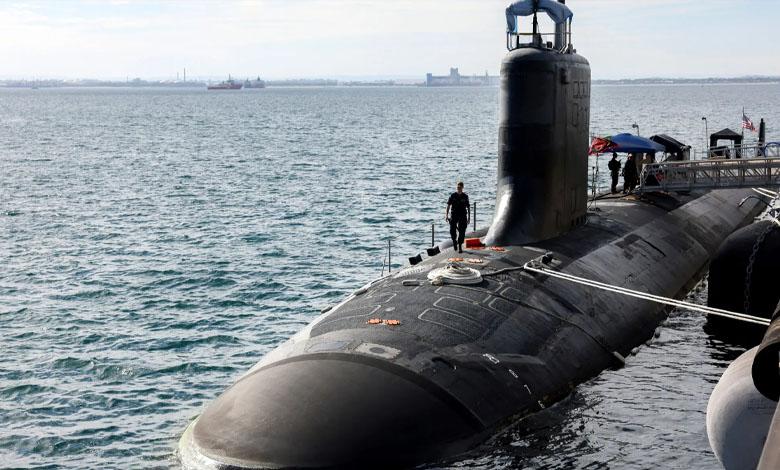“This ocean is no longer yours”: Chinese maneuvers that exposed Australia’s vulnerability

If you want peace, prepare for war. It seems that the inoculation from the fear of war, received after the Second World War, stopped working not only in Europe, where the military-industrial complex proved to be unprepared to respond adequately to the challenges associated with the Russian attack on Ukraine and potentially in Europe. Australia has also become aware once again of the vulnerability of its navy and – more broadly – the military industry in general, after the recent demonstration of military preparedness by China near its shores.
The Australian military has been nervously spinning for several weeks, watching the Chinese flotilla gallop around the continent, as if hinting: “Here we are, see how we can do it.” Celestial ships free plowed Australian economic zone, thundered cannons near commercial airspace, forcing civilian planes to change routes in order not to get into the “training” hell.
They even passed by Perth, ostentatiously mentioning the recent visit of an American submarine moored nearby. Then the Chinese quietly moved on to Indonesia, leaving Canberra to think. Officially, international law has not been violated. But it was actually Beijing’s southernmost, boldest route that laid bare Australia’s vulnerability, suggesting: “This ocean is no longer yours.”
How Beijing is testing Australia and AUKUS for strength
China is not just showing off its muscles – it is setting traps. This is no longer a tactical game, but a demonstration of a strategic offensive. Military exercises of the Chinese fleet near the shores of the “Green Continent” are not “accidental training” in international waters, but a clear and cold-blooded message: China is ready to enter any yard if it needs it. And if necessary, he will do it before anyone has time to ask what is happening.
Beijing has once again shown that there are no no-go zones for it. Chinese ships that appeared in the Tasman Sea forced dozens of civilian planes to change routes. It was a blow not only to security, but also to the psyche to create an atmosphere of uncertainty and fear. When the commercial pilot was asked what had happened, he simply replied, “The Chinese are shooting.”
Beijing’s official response was sustained in the spirit of impeccable bureaucratic coldness: “It’s normal. A big state has many interests.” China builds up influence: a military base in Cambodia, active actions in the South China Sea, systematic exercises in disputed waters.
Beijing does not just show strength – it testing reaction And she turned out to be anxious. The US, which recently pretended to be the defenders of the region, this time refused. Even more, when Trump was asked about AUKUS – he re-asked: “And what is it?” A great answer for a country that has to guarantee the security of allies.(For reference: AUKUS is a defense partnership between Australia, the UK and the US, announced in 2021 to strengthen security in the Indo-Pacific region, and is designed to help Australia build a fleet of nuclear submarines and transfer advanced military technology).
The Australian army is like a dog that considers itself dangerous as long as its American master sits on a chain. The problem is that the host is sometimes distracted, and the chain is American strategic facilities like a base “Pine Hep”, from where the US receives intelligence data, and Australia – the illusion that controls its own security.
In fact, Australian defense is not a story about autonomy, but about “renting” someone else’s military presence. They are part of the program ABCANZ – a kind of club of English-speaking soldiers who learn to act “in a single political rhythm”. But in the event that the US changes its political vector – and this, as we can see, happens almost every day – Australia will simply be left without support.
VICTIM – part of a big addiction. The “Southern Continent” spends billions, “buying” from the US a promise to supply submarines in the 2030s. However, given the pace of US shipbuilding, this deal looks like a long waiting list. Perhaps China will gain control of the southern seas before these boats are launched.
Australia could strengthen the alliance with other Asian partners, but this idea scares Canberra, because all alternative scenarios involve independence. And Australia is not yet ready for this – they got used to the umbrella of American security for too long.
And, in the end, if the USA one day “stops answering calls”, Australia risks being left alone with reality, where the main question will not be “where to buy submarines”, but “how not to become the next object of Chinese naval games”.
How Australia buys the illusion of security for billions
Australia is a big country with a big sea and a small navy. Their “powerful” armada is like an old grand piano: it sounds like it sounds, but the keys wobble. And while the Chinese ships calmly parade around the continent, the Australians count their combat units and sadly admit: the holes in the defense are wider than the Tasman Sea.
Their tankers are two units, both on a peg, like ancient museum exhibits. With 144 missiles on two Chinese ships and 200 on ten Australian ships, the score in this “sea battle” is known even before it begins.
VICTIM – a brilliant political firework that turned out to be a smoke bomb. Australia decided to “buy” its own security by paying $3 billion so that the Americans could put aside several of their nuclear submarines for sale. But the problem is that those submarines still exist in the form of drawings and promises. Already entered $500 million and all the Aussies got was a great presentation and uncertainty.
The Americans admit that they can build only 1.3 submarines per year, and at least 2.3 are needed to fulfill the agreement. And here a logical question arises: what exactly will Australia get in the 2030s, apart from pictures of these boats in glossy booklets? The US plans to fulfill its domestic orders first, and Australian priorities – “in order of priority”.
AUKUS is the story of how Australia is buying into a ‘future’ that may never arrive. Grand deals risk ending in years of waiting, bureaucratic delays and a backlog of broken promises. Simply put, by the time these submarines do appear in service, China can circle Australia several times.
But Canberra has big plans. Government promisesthat the fleet will be updated and strengthened by the 2030s. Currently developing new multipurpose frigates that will replace the Anzac-class vessels and enhance Australia’s anti-submarine warfare, local air defense and sea-lane defense capabilities, selected companies Mitsubishi Heavy Industries and Thyssenkrupp Marine Systems. The number of combat surface ships is planned to increase to 26. It is planned to replenish a fleet of six large surface drones that will serve as platforms for long-range, vertically launched missiles.
True, the same government officials know very well that it will be difficult to live until this “beautiful future”, especially if China does not slow down its offensive. But in practice it looks like the usual Australian bureaucratic mantra: “We do, we build, we think.”
It is better to scare once than to agree a hundred times
China displays its strategy as if it were an entertainment show for its intimidated neighbors. Why does Beijing have diplomacy when J-16 fighter jets are at hand, placed in the Paracel Islands? These metal “birds” are the new front line in the South China Sea. And every such plane is a signal: “We are the hosts here, and you are just guests who are late for your own party.”
Taiwan? China treats him like a capricious child who is first threatened to be spanked and then annexed. Large-scale exercises around the island in the fall of last year – a rehearsal of the performance called “The Great Reunion”. Beijing marks borders, as if saying: “We know where you live, and sooner or later we will come.”
In recent years, Chinese pilots carried out in the Indo-Pacific region, hundreds of dangerous maneuvers to intercept US and allied aircraft. It’s not just a show of strength, it’s a game on nerves.
In general, Beijing acts according to the principle “it is better to scare once than to agree a hundred times.” It’s not about protection, it’s about control and the willingness to change the map of the world by force. In the Indo-Pacific region, China builds his empire of fear. And those who have not yet understood this may wake up one morning and see a foreign flag on their shores.
This is the Chinese strategy: intimidate, surround, make people believe that resistance is pointless. And while China demonstrates its “quiet expansion” to the world, the neighbors of the “Green Continent” react, each in its own way.
New Zealand has traditionally tried to stay aloof, but when Chinese ships approach your shores, even the staunchest pacifists start counting missiles. Official Wellington dusty looks closely to cooperation with NATO, which appears to be a good company when China is knocking on your door.
Japan realized a long time ago that the time for reflection is over. The “Land of the Rising Sun” is increasing military budgets and deploying radar systems that track both North Korean missiles and China’s every move. Theirs cooperation with the USA and South Korea – not diplomacy, but a survival plan. NATO? Japan has not been shy for a long time watch towards the Atlantic.
South Korea, which has always tried to avoid excessive intimacy with anyone, is also forced to today search allies They are actively exchanging intelligence with Japan and the USA and are preparing for scenarios where not only North Korean missiles but also Chinese frigates appear on the horizon. At the same time, Seoul is trying to “keep face” and invites Beijing to summits, which seem to be more symbolic than meaningful.
With its maneuvers, China made it clear to everyone: “Either you talk to me, or I talk to your shores.” The reaction of the neighbors is simple – to unite, review the old defense plans and wait for the moment when Beijing decides that the map of the Indo-Pacific region needs new borders.
…Next time we will talk about how the situation in the Indo-Pacific region may escalate. It is interesting how China justifies its actions – both to its own citizens and to the world. Is Beijing not using these maneuvers as a propaganda tool to increase its influence on the international stage? Given Australia’s close trade ties with China, the question is: could Beijing pressure economically if Canberra becomes more active militarily? It is also worth considering whether there is unity in Australia on security issues, or is it causing controversy among politicians and society? And finally, is it time to revise international maritime rules to avoid future shows of force?
Tetyana Viktorova





